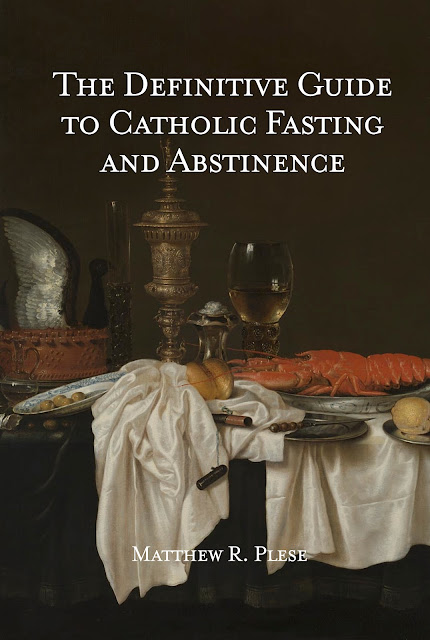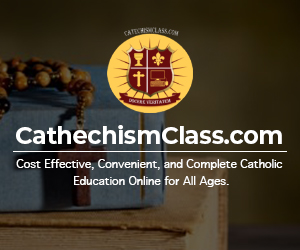Honoring the Saints
A saint is a person that lived a life of virtue, holiness, and union with God on earth. The Church recognizes a person’s sanctity by “canonizing” them. This means they are declared to be in Heaven and the Church presents the individual as one we are called to imitate. The Church does not canonize every soul in Heaven (even if known) but only those who the faithful are called to imitate and implore for aid.
The term "saint" is from the Latin word sanctus meaning "hallowed or “consecrated." The first person honored individually as a saint was Stephen, the first martyr. For nearly four centuries, praying to St. Stephen was incredibly popular. Beginning at the end of the second century, there were special celebrations on anniversaries of the martyrs' deaths. These martyrs were witnesses of Christ. They gave their lives for Him.
By the fourth century, sainthood was not just considered for martyrs. It was also for confessors and virgins. Saints could be monks, nuns, bishops, or any of the lay faithful. The saints are not merely the ones who have been canonized.
How Can the Saints Hear Our Prayers?
“And when he had opened the book, the four living creatures, and the four and twenty ancients fell down before the Lamb, having every one of them harps, and golden vials full of odours, which are the prayers of saints” (Apocalypse 5:8)
The Book of Revelations written by St. John the Apostle specifically mentions how the prayers of the saints are presented before God in Heaven. The saints in Heaven are very much aware of what is happening on earth because God has in His order of the world permitted them to know of prayers addressed to them. In Matthew 17:3-5, the Prophets Moses and Elijah were very much aware of what was taking place on the earth. The saints themselves are witnesses of what occurs on earth as the Book of Hebrews specifically states: “Therefore, since we are surrounded by so great a cloud of witnesses, let us rid ourselves of every burden and sin that clings to us and persevere in running the race that lies before us” (Hebrews 12:1). And our Lord Himself in Luke 15:7-10 describes those in Heaven rejoicing over repentance on earth. How could they do so unless in the mystical order of the universe God has somehow permitted them to know and see what was happening on the earth?
The History of Canonizations
There is a special process involved with officially determining that someone is a saint. The Catholic Church determines that a person is definitely in Heaven when they canonize someone. But the process for canonization has changed over time.
1. Early Church: The recognition of saints in the early centuries was often a local and spontaneous process. Local bishops or communities would acknowledge the holiness and intercession of certain individuals.
2. 6th Century: By the 6th century, the Roman Martyrology began to record the names of saints and martyrs, and this served as a kind of official list of those worthy of veneration. However, formal canonization processes as we know them today did not yet exist.
3. 10th Century: The first recorded case of a Pope canonizing a saint was Pope John XV in 993 who canonized St. Ulrich of Augsburg.
4. 12th Century: In the 12th century, the formal process of canonization began to take a definitive state. Pope Alexander III (1159–1181) established certain procedures, and the role of a formal canonization process became more structured.
5. 13th Century: In the 13th century, the papacy took a more direct role in investigating the lives of potential saints by the 13th century as the process began to appoint officials conducting inquiries and examinations.
6. 17th Century: By the 17th century, the authority to canonize saints became exclusively reserved to the Pope. Formal procedures included a thorough examination of the candidate's life, writings, and the verification of miracles attributed to their intercession.
7. 18th Century: The process of canonization was further codified in the 18th century by Pope Benedict XIV, who issued a comprehensive document titled "De Servorum Dei beatificatione et de Beatorum canonizatione" in 1734.
In the process towards sainthood, there are four steps someone must attain:
1. Servant of God: This is the initial title given to a person whose cause for sainthood has been officially opened by the Church. It signifies that the local bishop or the competent ecclesiastical authority has initiated an investigation into the person's life, virtues, writings, and reputation for holiness.
2. Venerable: If the initial investigation finds that the person lived a life of heroic virtue, the title is advanced to "Venerable." This stage does not imply that miracles have been attributed to the individual; rather, it acknowledges the person's exemplary life.
3. Blessed: To reach the next stage, beatification, at least one miracle (typically a medically unexplained healing) attributed to the intercession of the Venerable is required. Once beatified, the individual is given the title "Blessed," and their veneration is permitted in a specific region or religious community. In times before Vatican II, two miracles were required.
4. Saint: Canonization requires the verification of at least one additional miracle after beatification. When this criterion is met, the Pope declares the person a saint. In times before Vatican II, two miracles more miracles – hence four total – were required.
Hence, a canonization procedure, either as done in ancient times or since the Middle Ages, consists of two main aspects – namely both investigation and declaration. In the early Church, investigation was carried out by various members of the local church community and the declaration that a particular martyr was worthy of veneration was done by the bishop. Throughout it all, the presence of after death miracles helped confirm that the soul of the person was in Heaven. After all, God can not confirm falsehood with proofs so if someone intercedes for people on earth and God works miracles through them after death, then that soul must be in Heaven.
Are Modern Canonizations Infallible?
While former canonizations were undoubtedly infallible, the same cannot be said for Canonizations after 1983. This is seen in the grave doubts on the validity of the canonizations of John Paul II and Paul VI. As a result of the changes in the canonization process following Vatican II, there is reasonable concern to believe that modern beatifications and canonizations are no longer infallible. Since the promulgation of the new Code of Canon Law (1983) radically altered the procedures for the beatification and canonization of blessed and saints, serious doubts have arisen concerning the legitimacy of these new processes that favor speed and quantity over reliability. These concerns have only been exasperated by further changes in practice under John Paul II, Benedict XVI, and now Francis.
Regardless of the theological debate over the infallibility of canonizations, the process has been altered so radically that the debate prior to the changes was about something entirely different from the current state of affairs. Although some of the individuals purportedly canonized by the past three popes may have merited being honored for heroic virtue under the former juridically reliable process, it is certainly not within the competence of any individual Catholic to sort out the cases. We will need to wait until the restoration of normalcy in the Church for the proper authorities to sort out this morass. Until such time, we cannot pick and choose which modern canonizations we want to acknowledge. As such, it is a best practice to refrain from calling “Blessed” or “Saint” anyone given such a title after the changes of the mid-1980s.





.jpg)

.jpg)







